Alcohol and drug treatment in secure settings 2020 to 2021: report
Published 27 January 2022
Applies to England
1. Main findings
1.1 Treatment numbers and substance use
There were 43,255 adults in alcohol and drug treatment in prisons and secure settings between 1 April 2020 and 31 March 2021. Although numbers in treatment have been decreasing year on year, this was a drop of almost 10,000 (18%) from 2019 to 2020.
Around 60% (25,830) of these people started treatment during this year. Of the people starting treatment, half (49%) said they had a problem with opiate use, which was similar to the previous year.
Of the people starting treatment with opiate problems, 69% also had a problem with crack cocaine, a 9% decrease from the previous year.
1.2 Adults leaving treatment
A total of 25,494 people left treatment in secure settings in 2020 to 2021, compared to 34,378 in 2019 to 2020.
A third (32%) of those were discharged after completing their treatment free of dependence, compared to 26% in 2019 to 2020, an increase of 6%.
People in the non-opiate only and non-opiate and alcohol groups had the highest rate of successfully completing their treatment at 49% and 48% respectively. Both groups had a rate of 40% in the previous year.
The proportion of people in the alcohol only group who successfully completed their treatment increased to 44% from 41% the previous year. People in the opiate group had the lowest rate of successfully completing their treatment at 17%, but this was still a substantial rise from 12% the previous year.
1.3 Continuity of care
Continuity of care between treatment services in prisons and the community is monitored by the Public Health Outcomes Framework (PHOF) indicator C20. The proportion of adults released from prison and successfully starting community treatment within 3 weeks of release was 38.1% in 2020 to 2021. This has increased by 3.6% from the proportion in 2019 to 2020 (34.5%) and is 7.8% higher than when this was first reported in 2015 to 2016 (30.3%).
1.4 Deaths in treatment
There were 55 people who died while they were in treatment in 2020 to 2021. This is a 45% increase compared to the previous year when 38 people died.
1.5 Young people’s treatment
There were 727 young people receiving treatment for drug and alcohol problems in secure settings in 2020 to 2021. Cannabis was the most common problem substance among young people in treatment in secure settings (92%).
Of the 547 young people who left treatment in secure settings in 2020 to 2021, 40% completed their treatment successfully.
Most young people (83%) had a triage assessment within one week of arriving in a secure setting, and 64% of those starting treatment started their first intervention within one week of triage.
1.6 The effect of the COVID-19 pandemic
The number of people in treatment in 2020 to 2021 was affected by the coronavirus (COVID-19) pandemic, as the overall numbers in prisons and secure settings fell. Her Majesty’s Prison and Probation Service (HMPPS) monthly COVID-19 statistics report for March 2021 showed that the prison population was 78,100, a reduction of 5,800 since 13 March 2020.
Fewer people coming into custody would have meant fewer people starting treatment. This was a result of several factors, including courts closing or operating at reduced capacity, and long periods of lockdown meaning fewer arrests.
2. Adults in prison treatment: overview
2.1 Definitions
This National Drug Treatment Monitoring System (NDTMS) statistics report presents information on adults (aged 18 and over) who were receiving help in prisons and secure settings in England for problems with drugs and alcohol in the period 1 April 2020 to 31 March 2021.
Many people experience difficulties with and receive treatment for both substances. While they often share many similarities, they also have clear differences, so this report divides adults in treatment into 4 substance groups:
- Opiate: people who are dependent on or have problems with opiates, mainly heroin.
- Non-opiate: people who have problems with non-opiate drugs only, such as cannabis, crack and ecstasy.
- Non-opiate and alcohol: people who have problems with both non-opiate drugs and alcohol.
- Alcohol only: people who have problems with alcohol but do not have problems with any other substances.

Figure 1: how people are classified into substance reporting group
See below for a text description of the flowchart showing how people are classified into substance reporting groups after entering treatment and undergoing initial assessment.
People with an opiate problem are placed in the ‘opiate’ substance group, regardless of whether other substances are also problematic. All other people entering treatment are categorised as either ‘non-opiate only’, ‘non-opiate and alcohol’, or ‘alcohol only’.
Text description of figure 1
Adult enters treatment.
Question 1: does the person have problems with opiates?
- Yes: person is classified into the opiate substance group
- No: go to question 2
Question 2: does the person have a problem with non-opiate drugs?
- Yes: go to question 3
- No: go to question 4
Question 3: does the person have problems with alcohol?
- Yes: person is classified into non-opiate and alcohol substance group
- No: person is classified into non-opiate only substance group
Question 4: does the person have problems with alcohol?
- Yes: person is classified into alcohol-only substance group
2.2 Numbers in treatment

Figure 2: adults in treatment by setting
There were 43,255 adults receiving treatment for drug and alcohol problems in secure settings between April 2020 and March 2021. Most adults received structured treatment in prison (97%), either in a local, training, high security or open prison. The remaining people received treatment in young offender institutions (3%) and immigration removal centres (less than 1%).
You can find a definition of structured treatment in our community alcohol and drug treatment business definitions guidance.
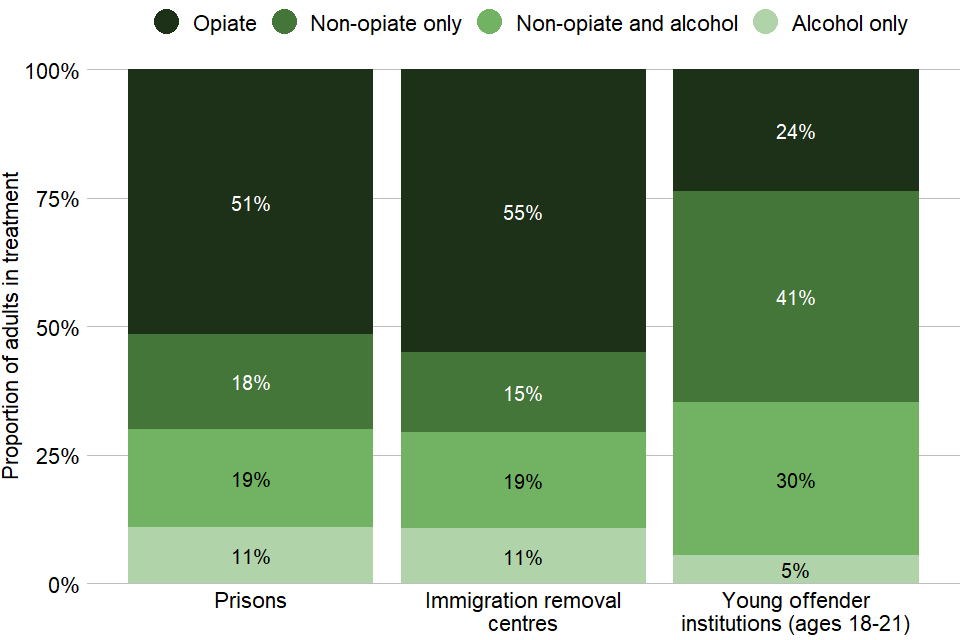
Figure 3: adults in treatment by substance group and setting
In prisons and immigration removal centres, the biggest drug category was the opiate group (51% and 55% respectively). Most people in young offender institutions (71%) were treated for non-opiates (41%) or non-opiates and alcohol (30%), with 24% reporting opiate use. Use of drugs other than opiates was reported by 38% of people in treatment in prisons and 34% of people in immigration removal centres. A lower proportion of people were treated for alcohol only in young offender institutions (5%) than in the rest of the secure estate (11%).
2.3 Sex
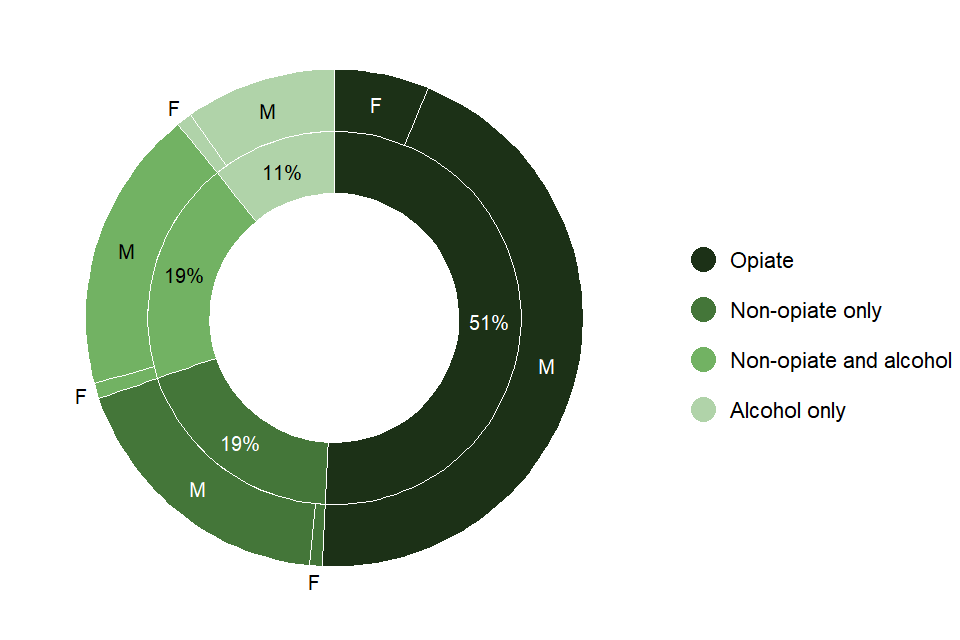
Figure 4: breakdown of adults in treatment by sex and substance group
| Substance group | Women | Men | Total |
|---|---|---|---|
| Opiate | 2,664 (12%) | 19, 293 (88%) | 21,957 (51%) |
| Non-opiate only | 372 (5%) | 7,851 (95%) | 8,223 (19%) |
| Non-opiate and alcohol | 439 (5%) | 7,958 (95%) | 8,397 (19%) |
| Alcohol only | 435 (9%) | 4,243 (91%) | 4,678 (11%) |
| Total | 3,910 (9%) | 39,345 (91%) | 43,255 |
Ninety-one per cent (39,345) of the people in treatment in adult secure settings were men and 9% (3,910) were women. This is more than double the proportion of women in prison, which was 4% at the end of March 2021 (as reported by HMPPS offender equalities annual report). The proportion of women in each substance group ranged from 12% (2,664) in the opiate group to 5% in both the non-opiate only group (372) and the non-opiate and alcohol group (439).
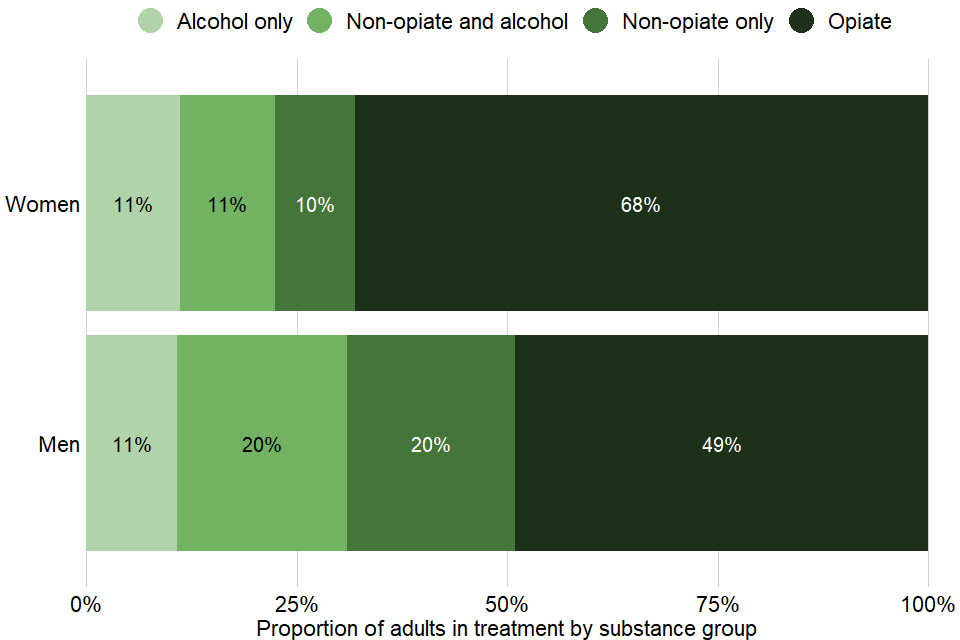
Figure 5: proportion of substance groups by sex
The substance groups showed big differences by sex. Over two-thirds of women (68%) in treatment had problems with opiate use compared with 49% of men. The other 32% of women were split almost evenly across the other treatment groups with 11% in both the alcohol only group and the non-opiate and alcohol group, and 10% in the non-opiate only group. Non-opiate drug problems were the second most common among men, with 40% in this category (20% in both non-opiate and non-opiate and alcohol groups). Eleven per cent of men reported using alcohol only.
2.4 Age

Figure 6: age of adults in treatment
The most common age range for adults in treatment in a secure setting was 30 to 39 years old. The largest drug group in this age group was opiates. This was also the largest drug group in 40 to 49 year olds, which was the second most common age range, and 50 to 59 year olds. The third and fourth most common age ranges were 25 to 29 and 21 to 24 respectively. The least common age range was 60 years and over. People in the non-opiate and alcohol and non-opiate only groups make up the largest populations in these age ranges.
The median age of adults in treatment in secure settings for alcohol alone and for opiate use was 38 years. This compares with 46 years and 42 years respectively for people in treatment in the community.
Adults in the non-opiate and alcohol and non-opiate only groups had median ages of 31 years and 29 years respectively (the median ages were 34 years and 32 years in community treatment).
Adults in alcohol and drug treatment in secure settings tended to be younger than those in community-based treatment. Although, like community treatment, adults being treated for alcohol problems only or opiates tended to be older than those treated for other substances.
2.5 Problem substances for adults in prison treatment
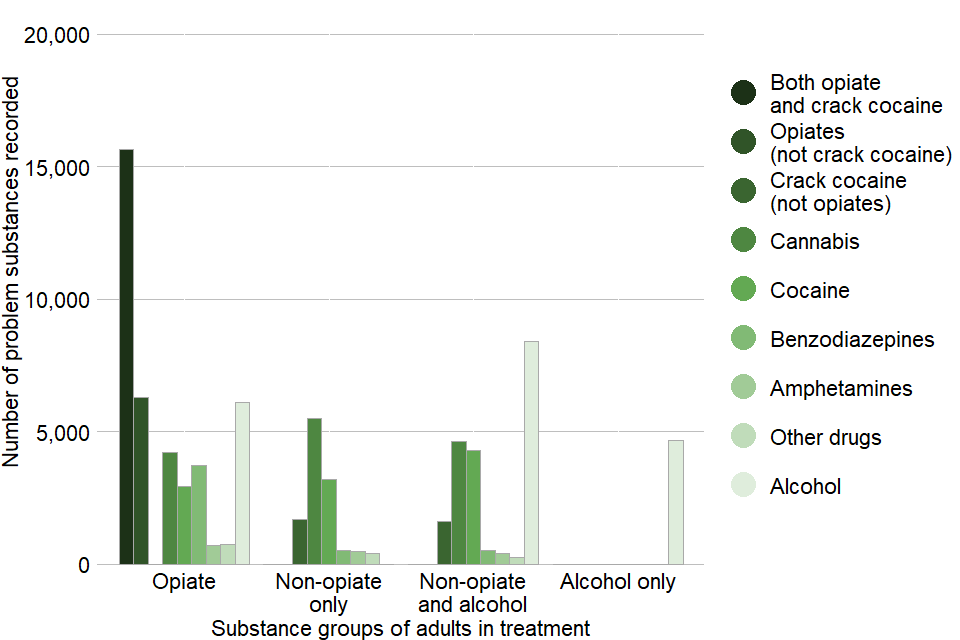
Figure 7: substances by group for adults in treatment (count of problem substances reported)
Of the people in treatment:
- 58% said they had a problem with opiate or crack use
- 44% said they had a problem with alcohol
- 11% said they had a problem with alcohol alone
- 33% said they had a problem with cannabis
- 24% said they had a problem with powder cocaine
Figure 7 shows a breakdown of the substances reported by people in prison treatment in 2020 to 2021, split into the 4 substance groups. Up to 3 substances can be recorded at the start of treatment, so one person could be counted for several substances within their substance group. For example, somebody who uses cocaine, cannabis and alcohol would be counted in the non-opiate and alcohol group 3 times.
In the opiate group, 15,655 people reported both opiate and crack problems and 6,302 reported problems with opiates but not crack. A total of 6,110 said they also had problems with alcohol, 4,204 had problems with cannabis, 3,728 had problems with benzodiazepines and 2,929 had problems with cocaine.
In the non-opiates only group, the most reported drug was cannabis (5,484), followed by cocaine (3,202) and then crack (1,691).
In the non-opiate and alcohol group, cannabis was the most commonly reported substance after alcohol (4,632). Cocaine was the next most common (4,301), with over half the people in this group reporting it as one of their main drugs. This was followed by crack (1,633), then small numbers reported using benzodiazepines, amphetamines and other drugs.
New psychoactive substances (NPS) were a problem for 10% of people in treatment in secure settings. However, this may not reflect overall NPS use in prisons, because data is collected when people enter treatment so does not include people who started using NPS while they were in prison. It’s also possible that some people who used NPS did not report it as one of the 3 main drugs they had problems with.
3. Adults starting prison treatment: pathways, age, substances
3.1 Pathways into treatment
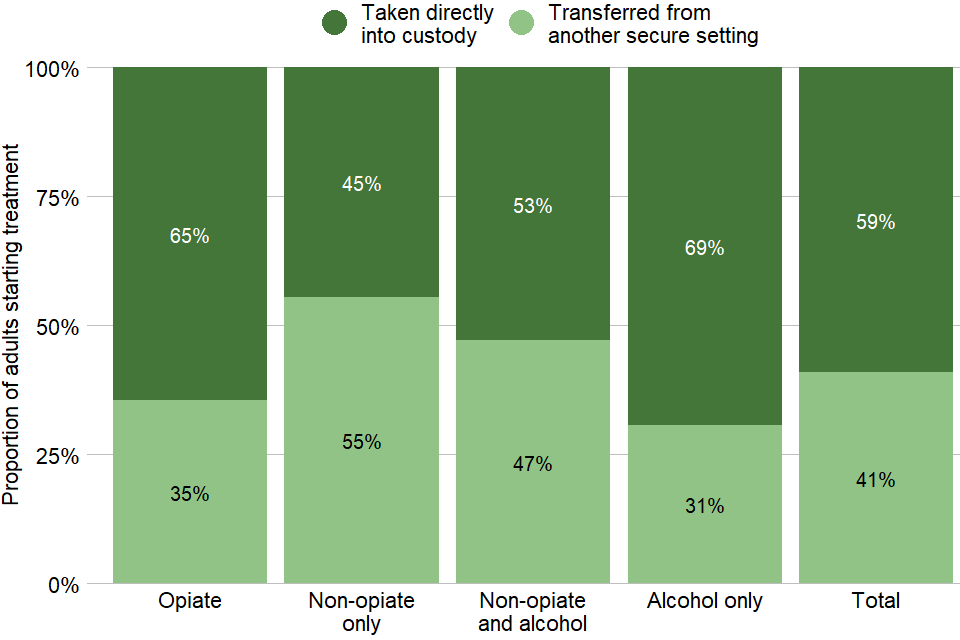
Figure 8: pathway into treatment for adults starting treatment in 2020 to 2021
Over half (59%) of the people starting treatment in an adult secure setting between 2020 and 2021 were taken directly into custody or detention from the community. The other 41% started treatment after being transferred from another secure setting. Most people starting treatment for opiate use or alcohol use only came directly into custody from the community (65% and 69% respectively). In the non-opiate only and non-opiate and alcohol groups, the proportions of people coming into treatment after being transferred from another secure setting were generally lower (55% and 47% respectively).
Most of the adults starting treatment who were taken directly into custody from the community (64%) started treatment immediately on arrival and 89% started within 3 weeks of arrival. However, 46% of people transferring from another secure setting took more than 3 weeks to start treatment.
3.2 Substances reported by adults starting treatment in secure settings
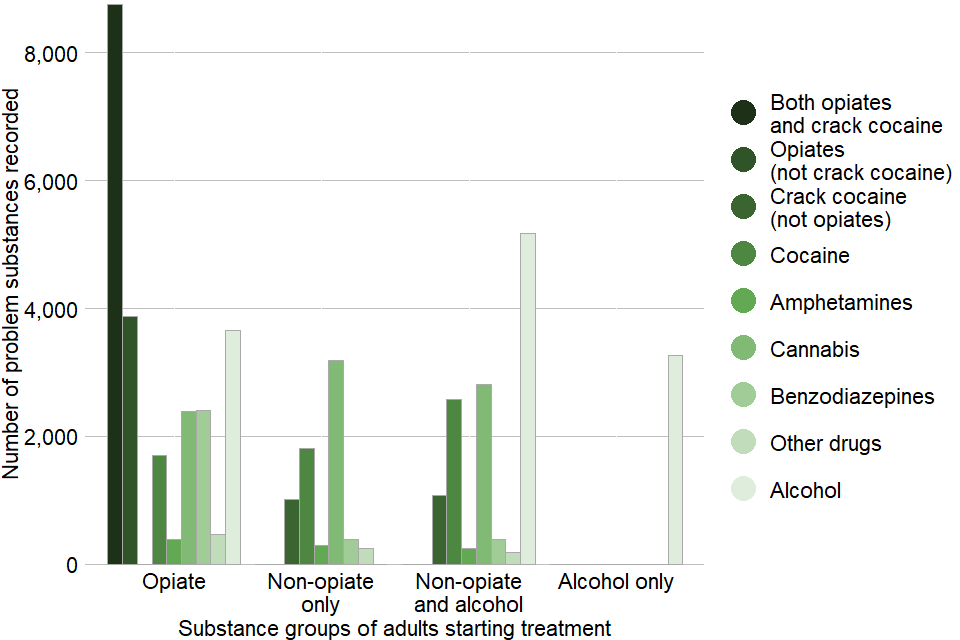
Figure 9: substances by group for adults starting treatment in 2020 to 2021 (count of all problem substances reported)
There were 25,830 people who started treatment for drug and alcohol problems in a secure setting in 2020 to 2021. This is where a person started a new treatment episode, which might also include returning to treatment.
Of the people starting treatment:
- 12,618 (49%) said they had a problem with opiate use
- 12,094 (47%) said they had a problem with alcohol
- 3,263 (13%) said they had a problem with alcohol alone
- 8, 382 (32%) said they had a problem with cannabis
- 6,101 (24%) said they had a problem with cocaine
Of the people with opiate problems:
- 8,749 (69%) said they had a problem with crack
- 3,664 (29%) said they had a problem with alcohol
- 2,393 (19%) said they had a problem with cannabis
- 2,409 (19%) said they had a problem with benzodiazepines
Three in five (5,989, 60%) people in the non-opiate substance groups reported having problems with cannabis (3,183, 67% for people in the non-opiate only group and 2,806 54% for people in the non-opiate and alcohol group). Cannabis was the most common problem substance in the non-opiate group and the most common after alcohol in the non-opiate and alcohol group. Just over a third (1,819, 38%) of the non-opiate only group reported problems with cocaine powder at the start of treatment, compared to half (2,574, 50%) of the non-opiate and alcohol group.
4. Mental health
Over a third (39%) of people starting treatment were identified as having a mental health need. The highest proportion was seen in the opiate group (42%), compared to 32% in the non-opiate only group. The mental health needs recorded in NDTMS should reflect the needs identified by prison healthcare staff or identified in the community before the person was in the secure setting.
5. Injecting drugs

Figure 10: injecting status of people adults starting treatment in 2020 to 2021
Most people starting treatment in 2020 to 2021 had never injected drugs (63%). This ranged from 39% of people in the opiate group to between 86% and 89% in the other substance groups. People in the opiate group were most likely to be currently injecting (26% compared to 1% or less for the other substance groups). Around a third (31%) of people in the opiate group reported previously injecting, compared to 9% in the non-opiate only group, 11% in the non-opiate and alcohol group, and 5% in the alcohol only group.
6. Parental status and safeguarding children
6.1 Parental status
| Parental status | % |
|---|---|
| Not parent and not in contact with children | 59.5 |
| Parent not with children | 29.3 |
| Other contact living with children | 5.3 |
| Parent living with children | 5.9 |
Figure 11: parental status of people starting treatment in 2020 to 2021
Eleven per cent of people starting treatment in 2020 to 2021 were living with children, either their own or someone else’s, before coming into the secure setting. This was less than the previous year when 14% were living with their own or someone’s else’s children before starting treatment.
Most people starting treatment were not in contact with children. Sixty per cent (24,857) reported that they were not parents and a further 29% (12,247) said they were parents but did not currently live with their children. This was similar to the proportion reported in the previous year (28%).
6.2 Safeguarding and early help
| Help received | % |
|---|---|
| Early help | 3.3 |
| Child in need | 1.2 |
| Child protection plan | 3.4 |
| Looked after child | 7.4 |
| No early help | 76.8 |
| Declined to answer | 8.0 |
Figure 12: children receiving early help or in contact with children’s social care
The children of 77% of adults starting treatment had no contact with children’s services. Seven per cent of people starting treatment had a looked after child, though this figure was higher in the opiate group at 9%.
Three per cent of people starting treatment had a child with a child protection plan, 3% were receiving early help and 1% were in contact with social services because they had a child in need.
7. Smoking

Figure 13: smoking prevalence at start of treatment
Around 4,000 people said they had smoked tobacco in the 28 days before entering prison. This is based on information collected at the start of treatment as part of the treatment outcomes profile monitoring form.
In all substance groups, the level of smoking was substantially higher than the smoking rates of the general population, which the latest Office for National Statistics report on smoking habits in the UK says are 15.9% for men and 12.5% for women. The smoking rates for the total treatment population were 45% for men and 62% for women.
Across all substance groups, women consistently reported smoking at higher levels than men, which is different to the general population. The drug group with the lowest level of smoking for both men and women was the alcohol only group.
8. Treatment types

Figure 14: breakdown of adults in treatment types by substance group
Almost all adults in treatment in secure settings (95%) received psychosocial interventions. Four per cent received pharmacological interventions only and 1% either did not start an intervention or an intervention was not recorded.
Psychosocial intervention only was the most common treatment type in the non-opiate only (93%), non-opiate and alcohol (81%) and alcohol only (65%) groups. Only 19% of people using opiates received psychosocial intervention only.
Almost half (48%) of adults in treatment received pharmacological interventions. Eighty per cent of the opiate group received these, compared to 32% of the alcohol only group and 5% of the non-opiate only group.
Pharmacological interventions are generally provided alongside psychosocial interventions to help support a person’s recovery, as recommended by the UK drug treatment clinical guidelines. Forty-four per cent of people in treatment received both pharmacological and psychosocial interventions. This was the most common treatment type in the opiate group (74%). A quarter of the alcohol only group, 15% of the non-opiate and alcohol group, and 5% of the non-opiate only group received this treatment type.
9. Treatment outcomes
9.1 Treatment exits and successful completion

Figure 15: breakdown of adult treatment exits in 2020 to 2021
A total of 25,494 people left treatment in secure settings between 1 April 2020 and 31 March 2021. A third (32%) of those were discharged after completing their treatment free of dependence, compared to 26% last year, an increase of 6%.
The non-opiate only group (49%) and non-opiate and alcohol group (48%) had the highest rates of successfully completing their treatment. Last year both of these groups had a rate of 40%. The proportion of people successfully completing treatment in the alcohol only group increased to 44% from 41% last year. The opiate group had the lowest rate of successfully completing treatment (17%), but this was still a substantial rise from 12% in the previous year.
Almost two-thirds (58%) of adults leaving treatment were transferred for further treatment, either in the community (45%) or in another secure setting (14%).
Continuity of care between treatment services in prisons and the community is monitored by the PHOF indicator C20. The proportion of adults successfully starting community treatment within 3 weeks of release was 38% in 2020 to 2021.
The remaining 9% of adults left treatment without completing it, mainly by dropping out of treatment (4%) or being discharged due to being released from court (2%). This year we added a new discharge reason, recommissioning transfer, which made up just over 1% of people leaving treatment. A recommissioning transfer indicates that a person has been transferred to another treatment provider, but this does not necessarily mean that the person has been physically transferred.
9.2 Deaths in treatment
There were 55 people who died while they were in treatment in 2020 to 2021, which represented 0.2% of all people leaving treatment. This is a 45% increase compared to the previous year, when 38 people died. People with opiate problems accounted for 56% of the deaths in 2020 to 2021, which is less than in adult community treatment where people with opiate problems accounted for 65% of deaths.
Of the people who died while they were in treatment, 96% were men and 4% were women. The median age of adults who died was 42. For the different substance groups, the median age ranged from 27 for the non-opiate and alcohol group to 49 for the alcohol group.
The UK clinical guidelines for drug misuse and dependence highlights the importance of take-home naloxone for previously heroin-dependent prisoners when they leave prison. Of all the people who were treated for opiate problems in prison, the proportion provided with take-home naloxone when they were released in 2020 to 2021 increased to 40% from 28% in 2019 to 2020.
10. Young people in treatment in secure settings
10.1 Young people’s treatment: overview
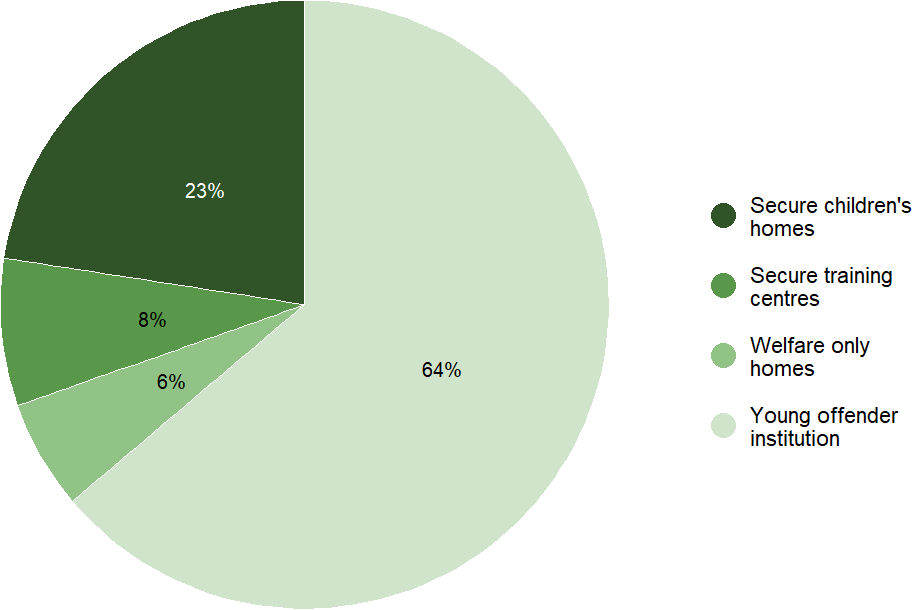
Figure 16: young people in treatment by setting
There were 727 young people receiving treatment for drug and alcohol problems in secure settings in 2020 to 2021. Most (64%) of these were in young offender institutions, with a further 23% in secure children’s homes, 8% in secure training centres and 6% in welfare-only homes.
10.2 Young people: age and sex

Figure 17: breakdown of young people by age and sex
Most (90%) of the young people in treatment in secure settings were male. HMPPS statistics on children and young people in secure settings show that 97% of the total youth custody population was male in March 2021 (excluding welfare only places but including settings in Wales).
Boys in treatment tended to be older, with the proportion of boys in each age group increasing with age. Less than 1% of boys in treatment were under 14 years old and over half (51%) were aged 17 or older. This was different to girls as only 15% of girls in treatment were aged 17 or older. Most of the girls in treatment were aged 16 (36%) or 15 (24%). The age groups with the smallest proportions for girls were 14 years old and under 14, which is a similar pattern to boys, but the proportions are bigger for girls (14% and 11% respectively for girls and 1% and 6% for boys).
The median age of boys was 17, the same as it has been for the last 3 years. The median age of girls was 16, increasing from 15 in the previous 2 years.
10.3 Young people: substance use
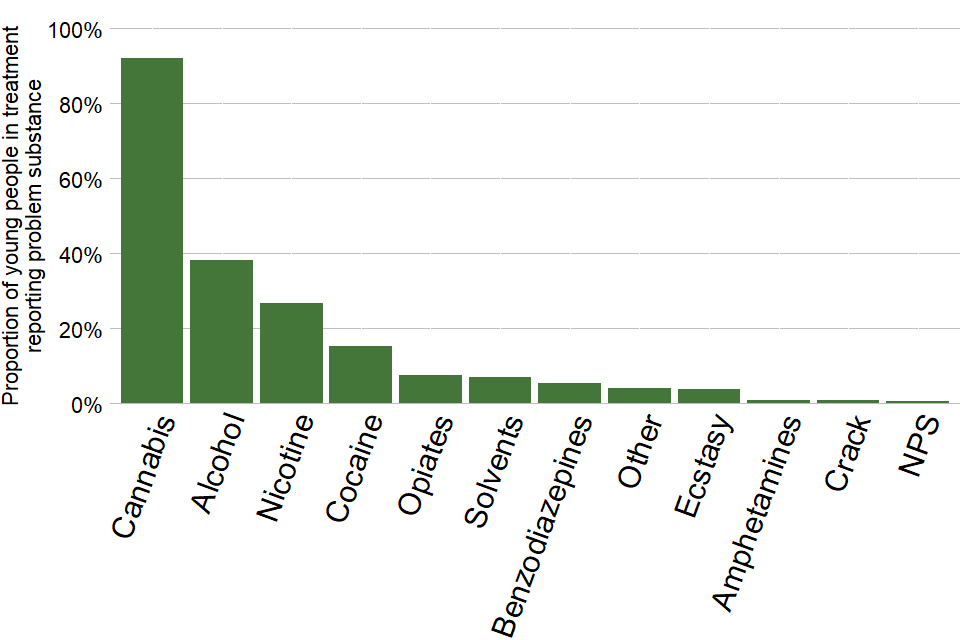
Figure 18: substances used by young people
Of the young people starting treatment in secure settings in 2020 to 2021:
- 92% said they had a problem with cannabis
- 38% said they had a problem with alcohol
- 27% said they had a problem with nicotine
- 15% said they had a problem with cocaine powder
- 8% said they had a problem with opiates
- 4% said they had a problem with ecstasy
Young people in treatment for problems with opiates, benzodiazepines, cocaine powder or crack were older (median age of 17) than those reporting other substances (the median age for cannabis, alcohol, ecstasy, solvents and nicotine was 16).
10.4 Vulnerabilities of young people starting treatment
| Vulnerability | % |
|---|---|
| Poly-substance use | 64.9 |
| Opiate and/or crack use | 9.8 |
| Pregnant or parent | 2.1 |
| Injecting – currently or previously | 0.4 |
Figure 19: vulnerabilities of young people starting treatment
Young people often enter specialist substance misuse services with a range of problems or ‘vulnerabilities’ which are related to (or in addition to) their substance use. These include using multiple substances (poly-substance use) and being a parent or pregnant.
The most common vulnerability by far was poly-substance use (65% of young people starting treatment). A further 10% said they used opiates or crack. Two per cent of young people reported being a parent or pregnant and nobody reported being a high-risk alcohol user.
Half (56%) reported only one vulnerability, 11% reported 2 vulnerabilities and nobody said they had more than 2 vulnerabilities.
10.5 Young people: treatment type
| Interventions received | % |
|---|---|
| Harm reduction | 66.6 |
| Psychosocial – motivational interviewing | 55.4 |
| Psychosocial – relapse prevention | 23.8 |
| Psychosocial – cognitive behavioural therapy | 13.9 |
| No valid intervention recorded | 20.6 |
| Psychosocial – counselling | 12.8 |
| Pharmacological | 0.3 |
| Psychosocial – family work | 0.3 |
Figure 20: intervention types for young people
Two thirds of young people in treatment (67%) received a harm reduction intervention. These interventions include support to manage risky behaviour associated with substance use, such as those that can lead to overdose or accidental injury.
Over half (55%) received motivational interviewing and nearly a quarter (24%) received relapse prevention interventions. A further 27% received cognitive behavioural therapy (14%) and counselling (13%). Less than 1% of young people received a pharmacological intervention (this involves medication prescribed by a clinician).
10.6 Young people: treatment exits

Figure 21: breakdown of young people’s latest treatment exits in 2020 to 2021
There were 547 young people who left treatment in secure settings in 2020 to 2021. Of these, 40% completed their treatment successfully. This is a big increase in the proportion of young people who successfully completed treatment since the previous year (28% in 2019 to 2020).
Of the 60% who did not complete their treatment successfully:
- 11% left treatment after being released from court
- 14% dropped out or had their treatment withdrawn by the provider (usually due to the person breaking their treatment contract)
- 14% were released from custody and transferred to another treatment service in the community (‘transferred not in custody’)
- 14% were transferred to another treatment service in custody.
- 18% declined treatment after being referred
11. Trends over time
Due to data compliance issues in some previous years, trends are displayed as proportions and not numerical volume in the adult sections, except the deaths in treatment section.
11.1 Trends: adults in treatment

Figure 22: trends in the number of adults in treatment by substance group
The number of adults in prison who were in drug or alcohol treatment fell from 52,891 in 2019 to 2020 to 43,255 in 2020 to 2021 (an 18% decrease). This continues a downward trend that is now 28% lower than the first year these statistics were reported (60,254 in 2015 to 2016).
Compared to the previous year, there were decreases in the number of people in treatment for all substance groups. The alcohol only group decreased by 15%, the non-opiate and alcohol group decreased by 16% and both the opiate and non-opiate only groups decreased by 19%.
Figure 22 shows the proportion of adults in treatment split by the 4 substance groups. The proportion in each group has remained fairly stable between 2015 to 2016 and 2020 to 2021.
The proportion of adults in the opiate substance group has ranged between 48% and 52%, the non-opiate and alcohol group between 18% and 20% and the non-opiate only group between 17% and 19%. The proportion of adults in the alcohol only group ranged from 14% in 2015 to 2016 to 10% in 2019 to 2020 and 11% this year.
The HMPPS monthly COVID-19 statistics report for March 2021 showed that the prison population was 78,100, a 5,800 reduction since 13 March 2020.
11.2 Trends: adults starting treatment
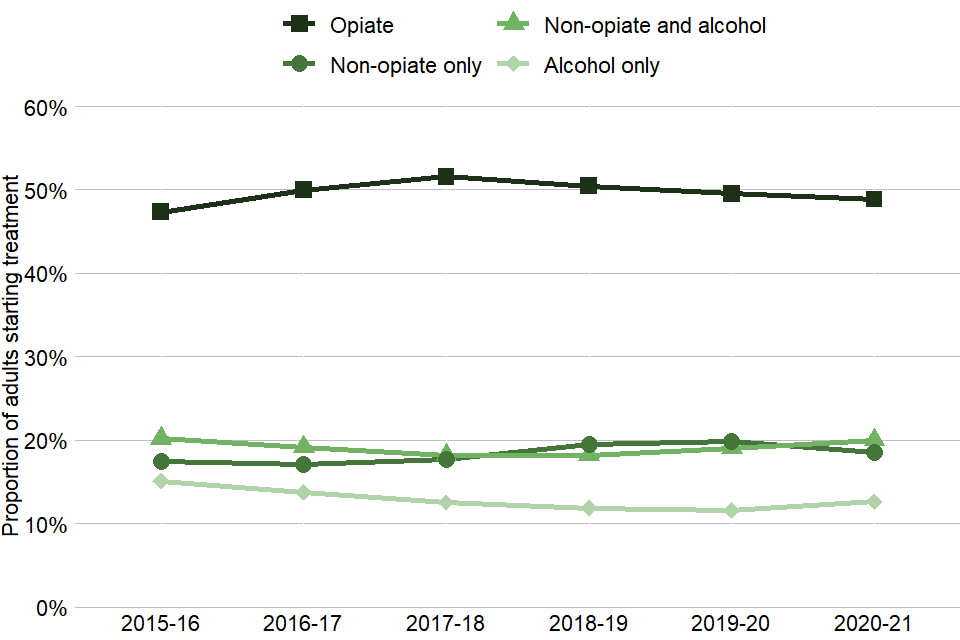
Figure 23: trends in substance use by adults starting treatment
The number of adults starting treatment in secure settings in 2020 to 2021 was 22% lower than the previous year (25,830 compared to 32,988 in 2019 to 2020), continuing a year-on-year decrease that is now 36% lower than the first year of reporting (40,382 in 2015 to 2016).
Compared to the previous year, the decrease was largest in the non-opiate only group (27%) and smallest in the alcohol only group (15%).
Figure 23 shows the proportion of adults starting treatment each year between 2015 to 2016 and 2020 to 2021 split by the 4 substance groups. Similar to the previous chart showing the proportions of adults in treatment in each substance group, the proportions of adults starting treatment in each group has remained fairly stable.
The proportion of adults starting treatment in the opiate substance group has ranged between 47% and 52%, the non-opiate and alcohol group between 18% and 20% and the non-opiate only group between 17% and 20%. The proportion of adults starting treatment in the alcohol only group ranged from 15% in 2015 to 2016 to 12% in 2019 to 2020 and 13% in 2020 to 2021.
11.3 Trends: opiate and crack use among adults starting treatment

Figure 24: trends in adults starting treatment reporting opiate or crack problems
Thirty-four per cent of people starting treatment in 2020 to 2021 reported problems with both crack and opiate use. This has decreased from 39% the previous year but is an overall increase from 26% in 2015 to 2016.
The proportion of people starting treatment with opiate problems (but not crack problems) decreased steadily from 22% in 2015 to 2016 to 11% in 2019 to 2020. The proportion then increased to 15% in 2020 to 2021. The proportion starting treatment with crack problems (but not opiate problems) has been increasing steadily from 5% in 2015 to 2016 to 8% in 2020 to 2021.
The proportion of people starting treatment for opiates, crack or both is similar to 2019 to 2020.
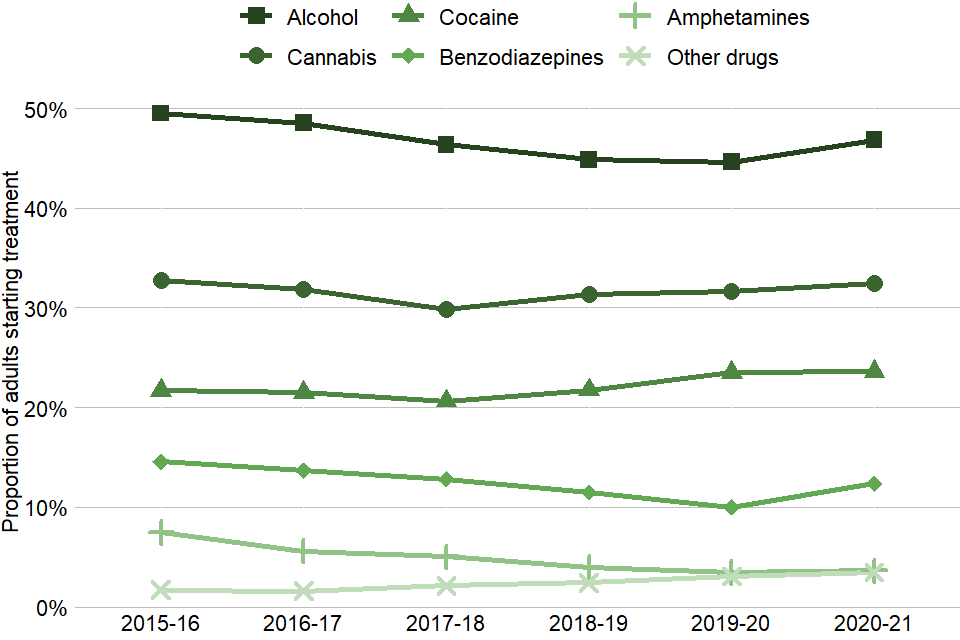
Figure 25: trends in adults starting treatment reporting problems with other drugs
The proportion of people starting treatment who reported alcohol problems was very similar to previous years, with 47% of people in 2020 to 2021 compared to 50% in 2015 to 2016. But we saw a small rise this year (2%) from 45% in 2019 to 2020. The proportion of those in treatment for cannabis also remained fairly consistent between 2015 to 2016 (33%) and this year (32%).
Over time, proportions of people in treatment for benzodiazepines and amphetamines have decreased since these statistics were first reported (decreases of 2% and 4% respectively since 2015 to 2016). However, the proportion of people in treatment for benzodiazepines has risen slightly this year from 10% in 2019 to 2020 to 12% in 2020 to 2021. The proportion of people in treatment for cocaine and other drugs have increased over the same period (increases of 2% for both groups since 2015 to 2016).
11.4 Trends: adults leaving treatment
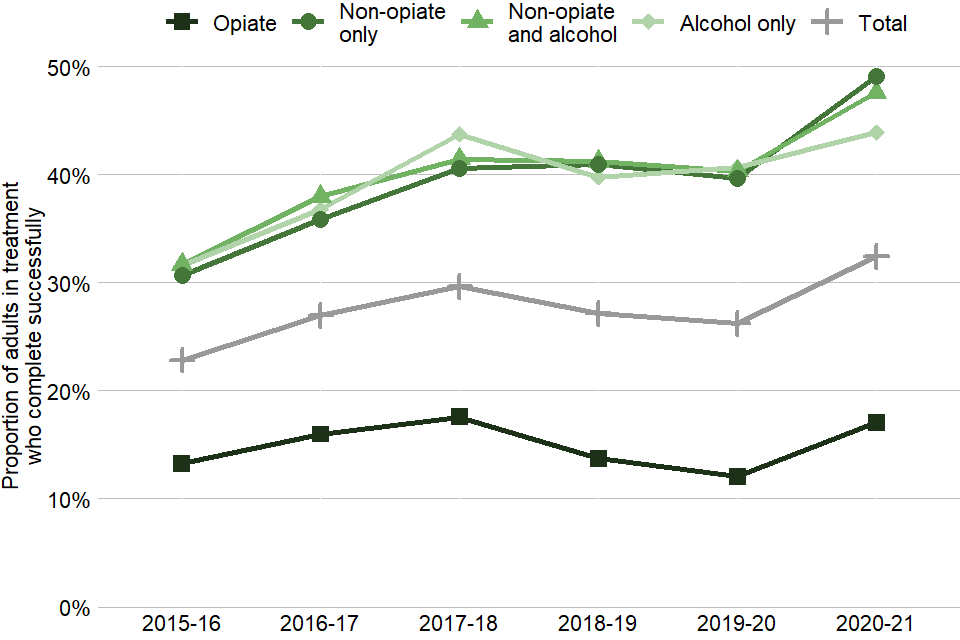
Figure 26: trends in adults completing treatment since 2015 to 2016
The proportion of adults leaving treatment after successfully completing their treatment free of dependence increased to 33%, from 26% in the previous year. All substance groups saw a rise in treatment completions since 2019 to 2020, with the largest in the non-opiate only group (from 40% to 49%) and the smallest in the alcohol only group (from 41% to 44%). The proportion of the opiate group successfully completing their treatment increased from 12% in 2019 to 2020 to 17% in 2020 to 2021, and the proportion of the non-opiate and alcohol group increased from 40% to 48%.
All of the substance groups saw a rise in treatment completions between 2015 and 2017, followed by a decrease until last year (2019 to 2020), then an increase this year. Although alcohol only has been increasing since 2018 to 2019.
Prison-to-prison transfers decreased significantly in 2020 to 2021 compared to last year, falling from 23% to 14%.
Continuity of care between treatment services in prisons and the community is monitored by the PHOF indicator C20. The proportion of adults successfully starting community treatment within 3 weeks of release has increased slightly from 34.5% in 2019 to 2020 to 38.1% in 2020 to 2021.
The numbers of people starting community based treatment after release from prison increased for all regions. The biggest increase was in the North West, where 9% more people engaged with local treatment services than the previous year. The lowest was in the South East, where the increase was under 1%.
11.5 Trends: deaths in treatment
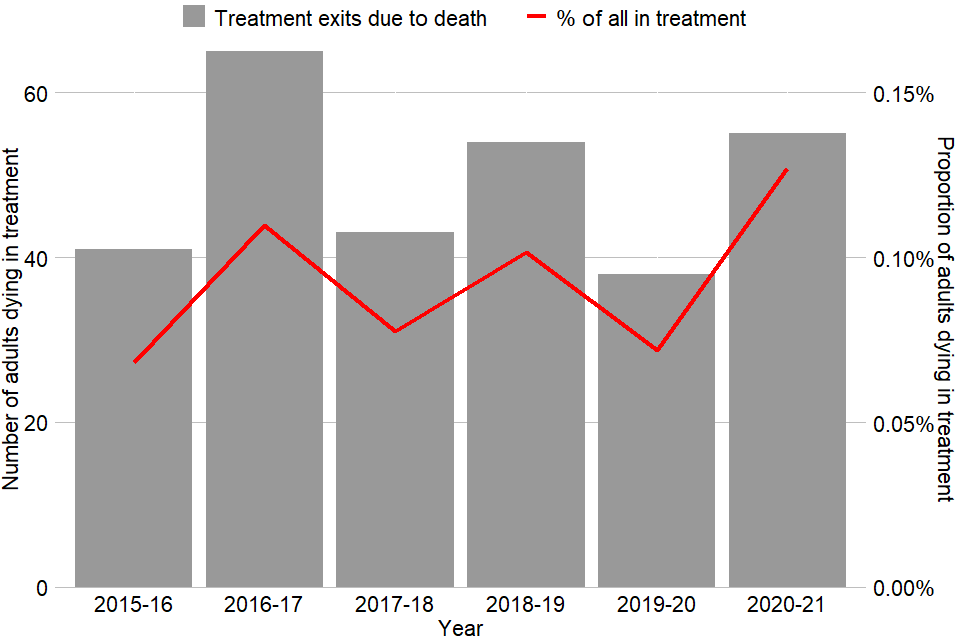
Figure 27: trends in deaths of adults in treatment
The number of adults who died in 2020 to 2021 while they were in contact with treatment services was 55. This increased by 45% from 38 deaths in the previous year. There was an increase in all substance groups except non-opiate only, but the largest increases were in the opiate (23 to 31, 35%) and alcohol only (3 to 10, 233%) groups.
The proportion of people in treatment who have died has increased and decreased several times since the first year of reporting (2015 to 2016). In 2019 to 2020, 0.07% of people in treatment died. This was the same as 2015 to 2016 and is the lowest proportion recorded since then. In 2020 to 2021, the proportion was 0.13%. This is the highest proportion recorded and is much higher than the previous highest proportion, 0.11%, in 2016 to 2017.
People with opiate problems continue to be the most at risk, with 56% of all deaths occurring in this group. The other substance groups accounted for less than 19% of deaths respectively.
11.6 Trends: young people in treatment
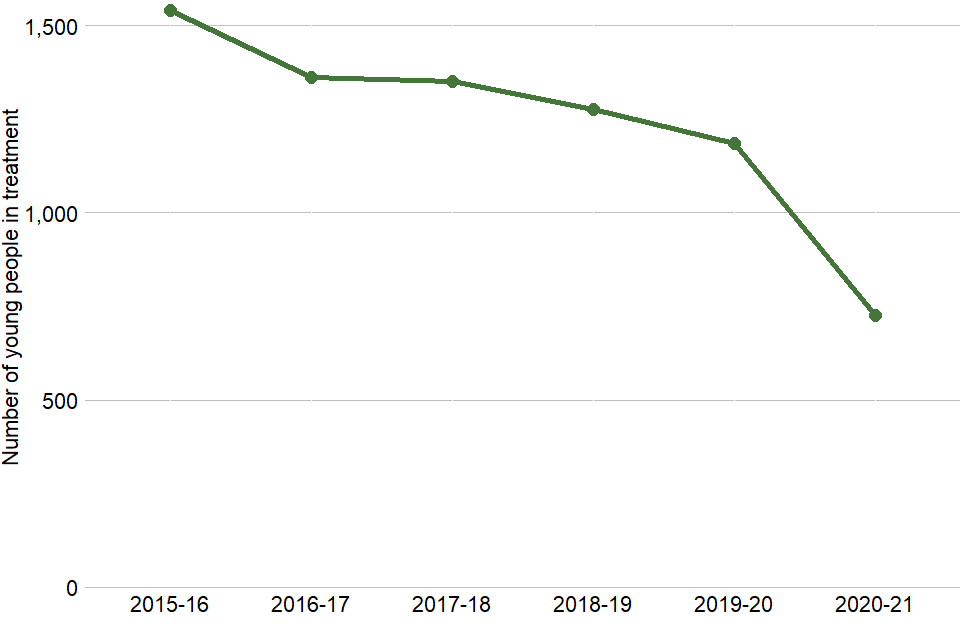
Figure 28: trends in numbers of young people in treatment from 2015 to 2016
The number of young people in treatment in secure settings in 2020 to 2021 fell by 39% compared to the previous year (from 727 in 2019 to 2020 to 1,186), continuing an overall downward trend since 2015 to 2016 (1,541). This is similar to the 30% decrease in the youth custody population (which includes 18 year olds) for England and Wales between March 2020 and March 2021 reported by HMPPS statistics on children and young people in secure settings.
11.7 Trends: substance use by young people starting treatment

Figure 29: trends in young people in treatment by most reported problematic substance
Cannabis has been the most common problem substance for young people in secure settings since these statistics were first published. In 2020 to 2021, 92% said they had a cannabis problem. This proportion has remained at similar levels since 2015 to 2016.
The proportion of young people reporting problems with cocaine (15%) has also remained similar to previous years. But the proportion with nicotine problems (27%) has increased slightly, as part of a gradually increasing trend since 2016 to 2017.
Fewer young people in treatment said they had problems with alcohol use in 2020 to 2021 (38%) than in 2015 to 2016 (51%). This continues the downward trend in young people with alcohol problems since the start of reporting secure setting treatment data in 2015 to 2016.
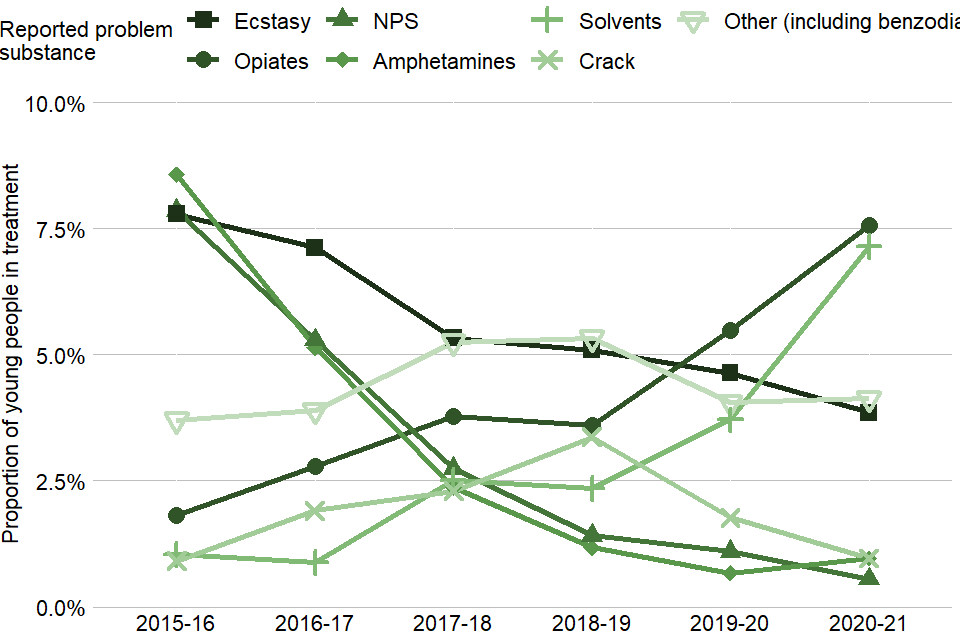
Figure 30: trends in young people in treatment by other problematic substances
The proportion of young people in treatment for opiate use has increased to 8% in 2020 to 2021, from 5% the previous year. This continues an increasing trend from a low of 2% in 2015 to 2016, the first year of reporting. Solvent use has also increased to 7%, the highest level since these statistics were first reported in 2015 to 2016 (1%).
The proportion of young people in treatment reporting problems with crack decreased to 1% in 2020 to 2021, from 2% the previous year and 3% in 2018 to 2019. These recent decreases followed a steady increase starting at 1% in 2015 to 2016 when these statistics were first reported.
The proportion of young people in treatment reporting problems with other drugs (including benzodiazepines) was 4% this year. This has remained broadly similar to previous years, only rising slightly to 5% between 2017 to 2018 and 2018 to 2019.
The proportion of young people reporting problems with NPS and amphetamine use has fallen from 8% and 9% respectively in 2015 to 2016, to 1% this year. Ecstasy use has also fallen from a peak of 8% in 2015 to 2016 to 4% this year.
11.8 Trends: young people’s treatment exits
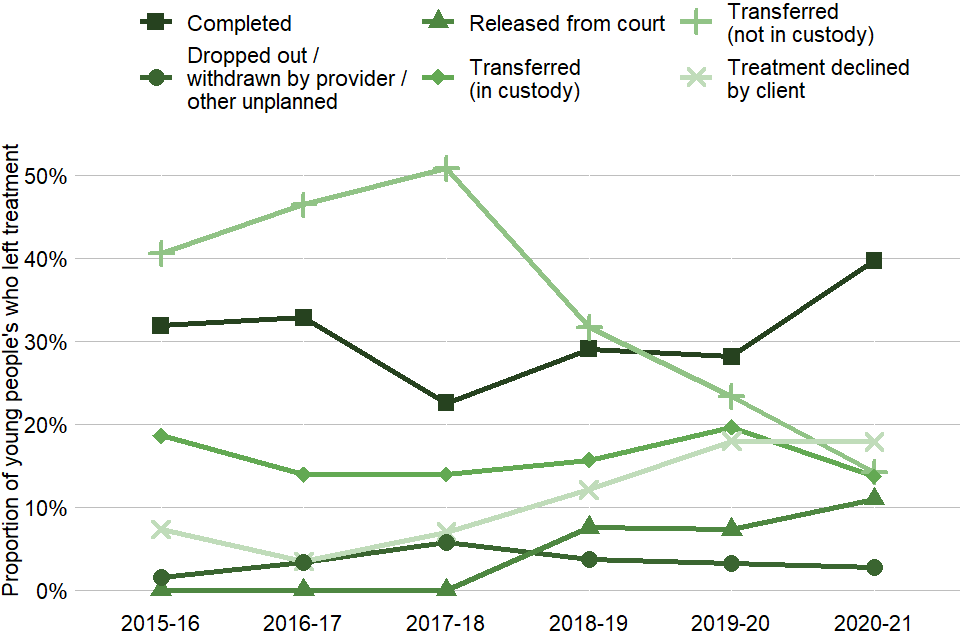
Figure 31: trends in young people leaving treatment
The proportion of young people completing substance misuse treatment in secure settings increased from 28% in 2019 to 2020 to 40% in 2020 to 2021, the highest reported. The previous highest proportion was 33% in 2016 to 2017 and the lowest proportion recorded was 23% in 2017 to 2018.
Similar to adult secure settings, the proportion of young people in treatment who were transferred to other treatment services in custody fell from 20% in 2019 to 2020 to 14% in 2020 to 2021. This decrease came after a gradual increase between 2016 to 2017 and 2019 to 2020.
Also similarly, the number of young people transferred to treatment services in the community on their release (not in custody) fell to its lowest level after a sustained decrease from a peak of 51% (462) in 2017 to 2018 to 14% (78) in 2020 to 2021.
These decreases may be partly explained by the NDTMS dataset introducing a new discharge reason from April 2018, to include the young people who were released from court and discharged before a transfer to community services could be arranged. In 2020 to 2021, the proportion of young people in treatment who left it because they were released from court was 11%, the highest reported.
The proportion of young people who dropped out, were withdrawn by the provider, or left treatment for another unplanned reason has stayed consistently low since 2015 to 2016. In 2020 to 2021 this proportion was 3%. The highest proportion recorded was 5% in 2017 to 2018.
After an initial decrease from 7% in 2015 to 2016 to 3% in 2016 to 2017, the proportion of young people who were referred for treatment but declined has steadily increased. In 2020 to 2021 the proportion was 18%, the same as the previous year.
12. Background and policy context
12.1 Background
This report presents statistics on the availability and effectiveness of alcohol and drug treatment in prisons and secure settings in England, and the profile of people accessing this treatment.
The statistics in this publication come from analysis of the NDTMS, which collects data from services providing structured substance misuse interventions to adults and young people in about 140 prisons and secure settings across England, including adult settings (prisons and immigration removal centres) and the children and young people’s secure estate.
The data collected includes information on the demographics and personal circumstances of people receiving treatment, as well as details of the interventions delivered and their outcomes.
You can find more details on the methodology used in the report in the NDTMS annual statistics quality and methodology information paper.
12.2 Policy context
Alcohol and drug treatment services in prisons and secure settings for adults and young people are commissioned by NHS England.
NHS England commissions specialist treatment services in secure settings which are equivalent to community-based treatment and informed by evidence-based clinical guidance.
Treatment includes interventions to reduce harm and to help people recover from alcohol and drug dependence. NHS England’s service specification describes how substance misuse services in prisons and secure settings should be provided.
The Royal College of Paediatrics and Child Health has published healthcare standards for children and young people in secure settings.
Continuity of care for offenders leaving prison who still need treatment is a priority for NHS England, HMPPS, the Office for Health Improvement and Disparities, the Department of Health and Social Care and the Ministry of Justice as set out in their National Partnership Agreement. There is also a partnership agreement for children and young people which includes continuity of care as one of the shared objectives.
The Public Health Outcomes Framework supports this priority by monitoring the engagement rates of adults who leave prison and continue their substance misuse treatment in the community.
Under the Children Act 1989, local authorities can place children into secure children’s homes and welfare only homes. In these circumstances, children and young people are held there because of concerns about their welfare, rather than because they have offended.
